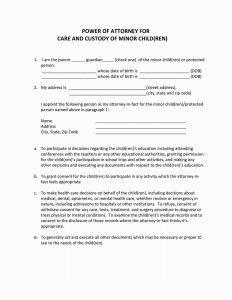Now let’s proceed to the specifics of filling out the power of attorney form. Follow these steps to complete the document correctly, thus avoiding any confusion or ambiguity regarding its legal force.
Step 1. Fill Out Personal Details
The first step is to indicate your name in the header of the document, which usually reads as “General (or another type) power of attorney of ______.” Then goes the introductory paragraph with standard wording, requiring you to indicate your name again, to give your address, city, and state, as well as the attorney-in-fact’s name, address, city, and state. By completing this part of the document, you also verify that the form was filled out in your name, in your stead, and for your benefit. Any new power of attorney document automatically revokes the authority given to a previous agent.
Step 2. Determine the Powers
Then follows a standard list of powers than a specific power of attorney document can provide to an agent, including the power to make payments or collect financial debts, the right to acquire, lease, or sell personal property, the right to manage real property, management and banking powers, tax powers, and the right to manage the principal’s motor vehicles. The principal can also indicate whether they allow the agent to access their safe-deposit boxes, make gifts and grants on their behalf, and involve in lending or borrowing operations at their discretion.
Entry into contracts, acting as the principal’s personal representative under HIPAA terms, making healthcare-related decisions, as well as the power to sue third parties failing to act in line with this document are also included in the list of powers. The Powers section also has an “Other” section at the end, allowing the principal to give additional instructions.
State 3. Specify the Appropriate Legal Interpretation
The following section of a power of attorney document requires the principal to indicate under the laws of which state the document will take effect. In other words, this part specifies the jurisdiction in which the functions of attorney-in-fact will be executed.
State 4. Indicate the Document’s Duration
This section allows the principal to set particular time frames during which the agent can make decisions on their behalf. This section includes both the date of the document’s coming into effect and its expiration, as well as additional terms (the principal’s right to revoke the document or their incapacitation).
Step 5. Sign the Document
As a final step, the power of attorney document should be signed by the principal and the agent, with the print name indicated under the signature. The document should also be dated notarized to take force.
On our website, you can find all power of attorney templates and use them depending on the legal document you need. We also provide a blank power of attorney form that can be downloaded from the website and printed out for manual filling.
Know the Risks
Though a power of attorney can help the principal simplify many aspects of their lives such as sale and purchase of property, management of financial matters, guardianship over children, etc., a broad formulation of powers can lead to the abuse of the agent’s authority. The problem arises from the fact that POA arrangements are regulated by contract, not by law. Thus, in some cases, agents may make decisions and sign documents that the principal did not initially intend them to do, causing much chaos in the principal’s estate.
To avoid the risk, the principal should formulate the agent’s authorities very precisely, giving the latter the power to do only the activities that the principal intended them to. Setting proper limitations for the agent’s scope of authority is a wise step to ensure that the delegated activities are performed without abuse or misuse of the given power.






